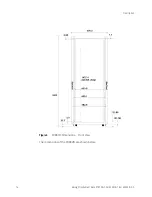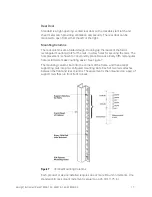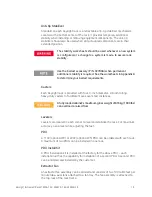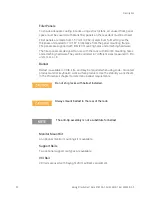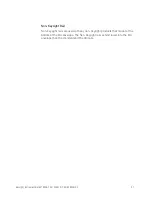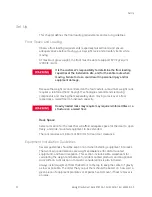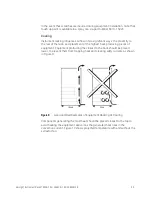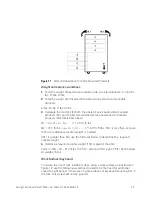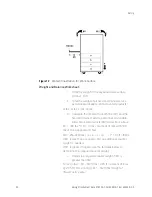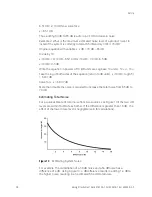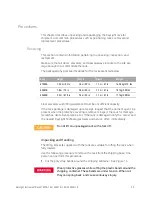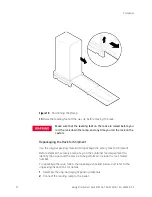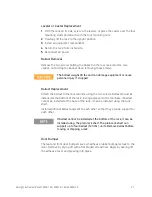
Keysight Instrument Rack E7950A-1.3m E3661B-1.6m E3662B-2.0
27
The first consideration, after leveling the rack on the leveling feet, and extending
the anti-tip mechanism, is to load the rack from the bottom to the top.
Acoustic Considerations
Airborne audible noise is a primary concern for most system configurations.
Noise from forced convection thermal management solutions such as the
extractor fan is directly proportional to the volume of air passing through the
rack.
Total system noise should be considered during the design phase, as it can
affect areas where the system can be used, operator comfort and safety, and
impact federal and regulatory agency compliance requirements for noise output.
Individual product noise can augment (increase) system noise above extractor
fan ratings due to constructive (additive) interference between various in-place
frequencies, and decrease below the extractor ratings if destructive (subtractive)
interference is present.
Total system noise is impossible to calculate completely accurately. Therefore,
system acoustic performance should be measured to ensure that acoustic goals
are met. However, assuming the worst case (constructive) noise levels, some
general estimating guidelines can be used to combine noise levels of system
products used together. Acoustic sound power and pressure data are
logarithmic (not linear). Thus:
50 dB + 44 dB = 51 dB
Below are two examples to illustrate the point.
Example 1. What is the estimated sound power output of my two-component
system if component 1 contributes 50 dB, and component 2 contributes 65 dB?
Original equation with variable x.
50 dB + 65 dB = x dB
Divide the entire equation by 10. 50/10 dB + 65/10 dB = x/10 dB
Write the equation in powers of 10 ( dB units are Log base 10 units). 10
5
+ 10
6.5
=
10
x/10
Evaluate the left side of the equation. 100,000 + 3,162,277.66 = 10
x/10
3,262,277.6 = 10
x/10
Take the log of both sides of the equation (return to dB units). log (3,262,277.66)
dB = x/10 dB
The anti-tip stabilizer is not a substitute for ballast. Use the
anti-tip mechanism when loading or unloading equipment.


